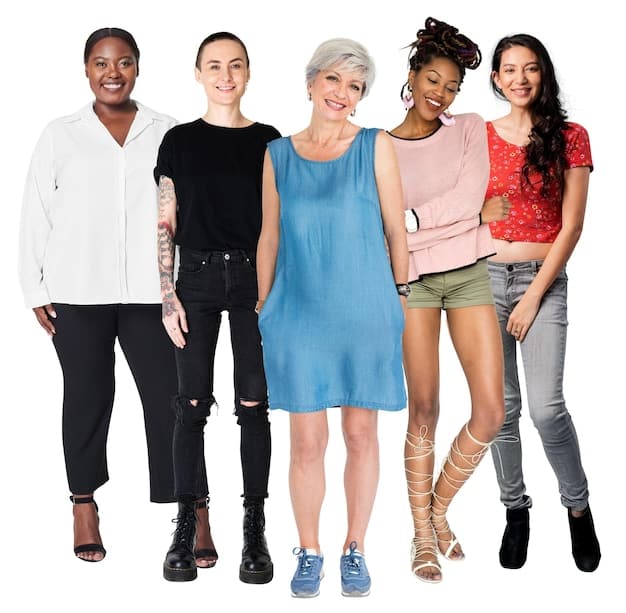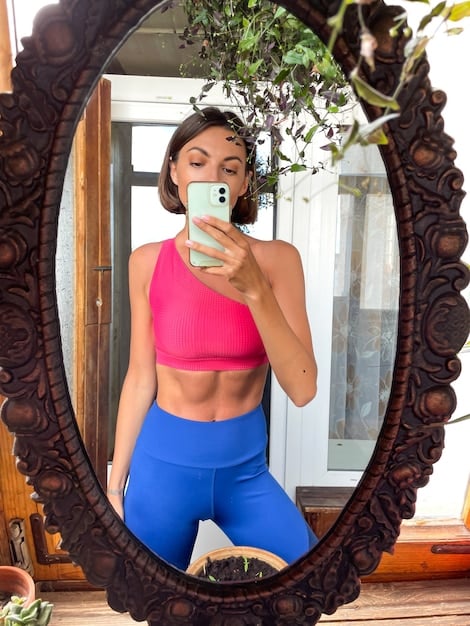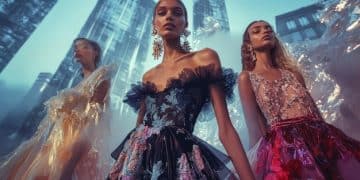The Body Image Controversy in Fashion: Are Brands Finally Listening?

The controversy surrounding body image in fashion is a long-standing issue, but there are signals that brands are finally beginning to listen and respond to consumer demands for more inclusive representation.
The fashion industry has long been criticized for promoting unrealistic and often unattainable beauty standards. The controversy surrounding body image in fashion stems from a history of favoring thin, often white, models, leading to exclusion and negative impacts on individuals’ self-perception. But, are brands finally listening?
This article delves into the ongoing debates and explores whether recent shifts in inclusivity and representation mark a genuine turning point in the fashion world. Is it just performative or is real change afoot in addressing the controversy surrounding body image in fashion?
The Historical Context of Body Image in Fashion
For decades, the fashion industry has perpetuated a narrow definition of beauty. This has deeply impacted societal perceptions of body image, leading to exclusion and mental health challenges.
The Reign of “Heroin Chic”
In the 1990s, “heroin chic” glorified extremely thin, pale models with dark circles, setting an unrealistic and unhealthy standard for women. This trend has been widely criticized for promoting dangerous ideals and contributing to eating disorders.
Lack of Diversity
Historically, fashion has also lacked ethnic diversity, primarily featuring white models. This further marginalized individuals from different cultural backgrounds, reinforcing a limited view of beauty.
The industry’s lack of inclusivity has had tangible consequences. Here are some key points:
- Increased rates of body dissatisfaction and eating disorders.
- Marginalization of individuals from diverse ethnic backgrounds.
- Reinforcement of unattainable beauty standards.

Ultimately, understanding the historical context is crucial for appreciating the ongoing efforts for change and addressing the controversy surrounding body image in fashion.
Are Brands Finally Listening to the Body Image Debate?
In recent years, there’s been a growing call for brands to be more inclusive and representative, leading to what appears to be a shift in attitudes. But is it genuine or just a marketing tactic?
The Rise of Body Positivity
The body positivity movement has gained significant traction, encouraging individuals to embrace their bodies regardless of size, shape, or other perceived imperfections. This movement has put pressure on brands to reflect these values.
Social Media’s Impact
Social media platforms have provided a space for consumers to voice their opinions and demand more inclusive representation. Brands risk backlash if they fail to meet these expectations.
Several factors indicate that brands are starting to pay attention:
- Increased use of plus-size and diverse models in advertising campaigns.
- Development of extended size ranges and inclusive product lines.
- Partnerships with body positivity influencers and advocates.
Acknowledging these changes is important in assessing whether brands are genuinely addressing the controversy surrounding body image in fashion.
The Role of Influencers and Celebrities
Influencers and celebrities play a significant role in shaping perceptions of beauty and body image. Their advocacy for inclusivity can have a substantial impact on consumer attitudes.
Promoting Diversity and Representation
Many influencers are using their platforms to promote body positivity, diversity, and representation, challenging traditional beauty standards. Their messages resonate with a wide audience and inspire others to embrace their unique identities.
Collaborating with Brands
Influencers are increasingly collaborating with brands to promote inclusive products and campaigns. This partnership approach allows brands to reach a wider audience and demonstrate their commitment to diversity.
The influence of celebrities and influencers is evident in these trends:
- Increased visibility for diverse models and body types in media.
- Promotion of body-positive messages and self-care practices.
- Greater consumer acceptance of non-traditional beauty standards.
Their efforts contribute positively to addressing the controversy surrounding body image in fashion by promoting inclusivity and acceptance.

Criticisms and Challenges of Body Image in Fashion
Despite progress, the fashion industry still faces significant criticisms and challenges related to body image. Addressing these issues is crucial for achieving genuine and lasting change.
Greenwashing and Tokenism
Some critics argue that brands engage in performative allyship, using diverse models as a marketing tactic without making substantial changes to their business practices. This can be seen as “greenwashing” or “tokenism,” misleading consumers about their true commitment to inclusivity.
Lack of Authentic Representation
Even when brands feature diverse models, they may still perpetuate unrealistic standards through excessive retouching or limited size ranges. Authentic representation requires showcasing individuals in their natural state, without artificial enhancements.
Here are some of the ongoing challenges facing the industry:
- Addressing persistent beauty ideals that prioritize thinness.
- Ensuring that diversity and inclusion efforts are authentic and not tokenistic.
- Creating inclusive product lines and size ranges that cater to diverse body types.
Overcoming these challenges is essential to truly resolve the controversy surrounding body image in fashion.
The Future of Body Image in Fashion: What’s Next?
Looking ahead, the future of body image in fashion depends on sustained efforts to promote inclusivity, celebrate diversity, and challenge traditional beauty standards. The conversations must continue.
Continued Advocacy and Activism
Advocacy groups and activists will continue to play a crucial role in holding brands accountable and advocating for meaningful change. Their efforts help ensure that progress is sustained and that the industry remains committed to inclusivity.
Technological Innovations
Technological advancements, such as virtual try-on and personalized sizing tools, can empower consumers and promote body positivity. These technologies allow individuals to find clothing that fits and flatters their unique body types.
Some potential future trends include:
- Increased adoption of virtual and augmented reality technologies.
- Development of more sustainable and ethical production practices.
- Greater emphasis on individuality and self-expression.
By embracing these changes, the fashion industry can address the controversy surrounding body image in fashion and create a more inclusive and accepting environment.
What Consumers Can Do to Promote Positive Change
Consumers have the power to influence brands and promote positive change in the fashion industry. By making informed choices and supporting inclusive brands, individuals can drive demand for more diverse and representative products.
Supporting Inclusive Brands
Seek out and support brands that prioritize inclusivity and representation. This sends a clear message to the industry that consumers value diversity and are willing to support companies that align with their values.
Demanding Transparency
Demand transparency from brands regarding their production practices, marketing efforts, and commitment to inclusivity. This ensures that companies are held accountable and that their actions match their claims.
Here are some actionable steps consumers can take:
- Boycott brands that perpetuate harmful body image ideals.
- Use social media to share positive messages and advocate for change.
- Support influencers and advocates who promote body positivity and diversity.
Ultimately, collective action can help transform the industry and address the controversy surrounding body image in fashion for the better.
| Key Point | Brief Description |
|---|---|
| 🌟 Historical Context | Fashion’s narrow beauty standards led to body image issues. |
| 📣 Brands Evolving | Brands are slowly including diverse models after body positivity movement. |
| 💪 Consumer Power | Consumers can support inclusivity by choosing inclusive brands. |
| 📱 Social Impact | Social media drives demand for representation in fashion. |
Frequently Asked Questions (FAQ)
The focus on thin models, lack of diversity, and promotion of unrealistic beauty standards are key factors. These contribute to negative body image perceptions and exclusion.
The body positivity movement has pressured brands to be more inclusive and represent diverse body types. This has led to increased visibility for plus-size models and body-positive campaigns.
While some progress has been made, it’s essential to scrutinize brands’ actions. Authentic inclusivity requires real changes, not just token representation or “greenwashing” tactics related to the controversy surrounding body image in fashion.
Influencers can promote body positivity and challenge traditional beauty standards. They often collaborate with brands to promote inclusive products, reaching a wider audience.
Consumers can support brands that prioritize inclusivity and demand transparency. By boycotting brands that promote harmful ideals, they drive demand for more representative products which impacts the controversy surrounding body image in fashion.
Conclusion
In conclusion, the controversy surrounding body image in fashion is complex and ongoing. While some progress is evident, sustained efforts are needed to challenge traditional beauty standards and promote genuine inclusivity. By holding brands accountable and supporting positive change, we can shape a more accepting and diverse fashion industry.





